This ezekiel bread recipe is on an entirely different level than your everyday bread. This bread is made with a variety of sprouted grains and is amazingly healthy and delicious.
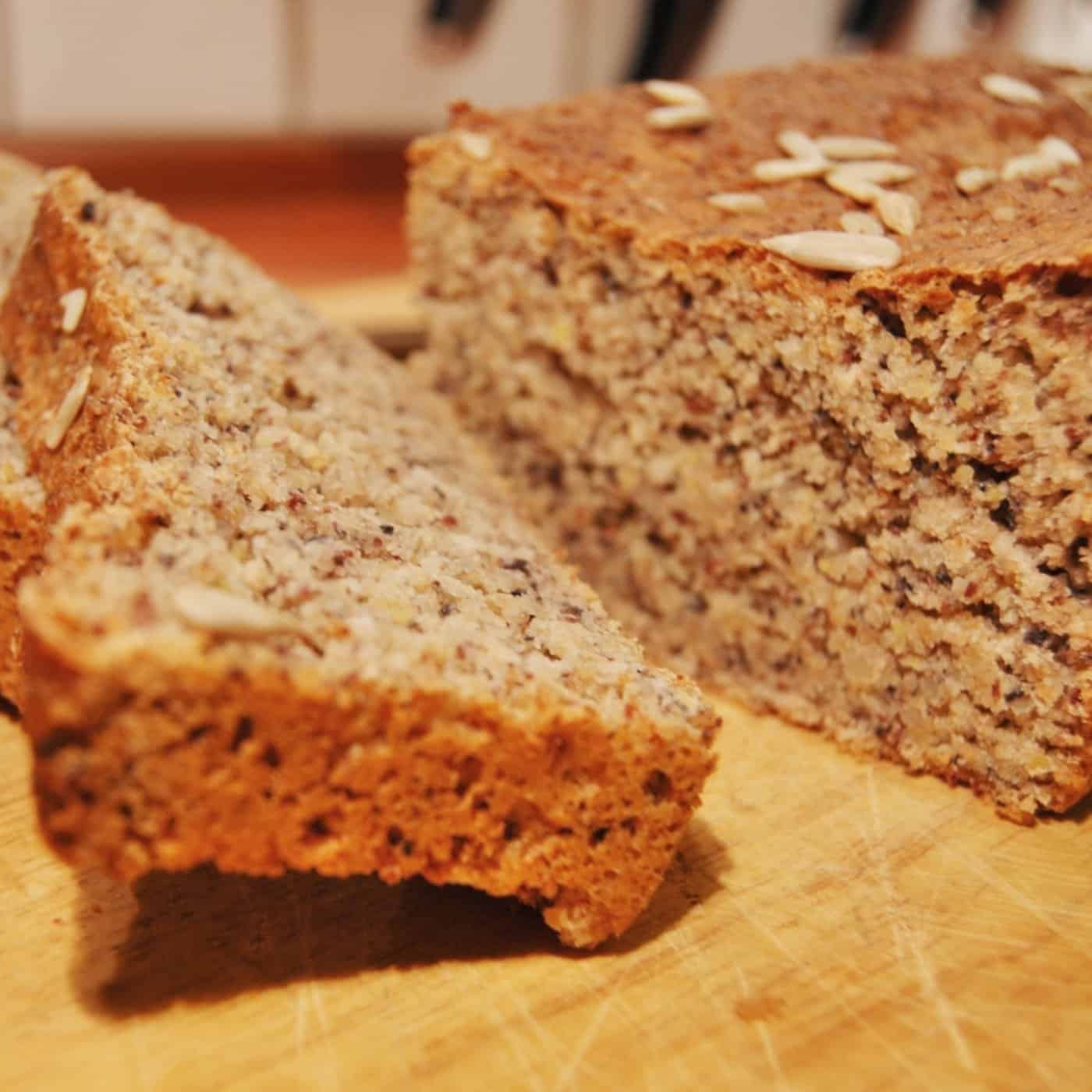
Speaking of bread, you can't go wrong with my cream cheese banana bread recipe and my easy chocolate chips zucchini bread. As far as comfort food goes, this is epic, and this happens to be one of my famous recipes.
Contents
🍞 Why I love this recipe
Bread recipes are always overlooked, yet they make the perfect comfort food. Ezekiel bread is one recipe I enjoy making as much as I enjoy eating.
Delicious and surprisingly filling, this easy ezekiel bread recipe is perfect for a quick breakfast and in-between snacking. It’s simple to make and incorporates a wide range of ingredients that are easy to get.
This ezekiel bread is tasty, especially when combined with greek yoghurt or cottage cheese.
I have made it a multiple times, and it has turned out to be my favorite snack. In exploring my culinary skills, I have come to discover so many more recipes for Ezekiel bread. It is a batter bread that even the pickiest of eaters in my family seems to enjoy.
As far as bread recipes are concerned, this homemade Ezekiel bread recipe is relatively easy to master. Since this is made with whole grains and beans, it is bound to leave you feeling full for longer.
🍽 Ingredient notes
The ingredients are everything in this Ezekiel bread recipe since they give it that unique taste.
What makes Ezekiel bread stand out is the number of grains and legumes used in the recipe. To make delicious homemade Ezekiel bread, you will need whole grains like wheat, millet, spelt, and oat bran.
For the legumes, I usually use green lentils, black beans, and kidney beans.
🔪 How to make
Learn how to make the best ezekiel bread recipe in this easy, step by step guide.
Step 1
Measure the water, honey, olive oil, and yeast into a large bowl. Let it sit until foamy, about 5 minutes.
Step 2
Stir all of the whole grains and beans together until well mixed, then grind in a flour mill or blender and blend together with any grains you had that were already ground.
Step 3
Add this flour mixture to the yeast mixture and stir until well combined - the dough will be very sticky and wet.
Step 4
Pour the dough into a prepared loaf pan and let rise in a warm place four about 45 minutes, or until it reaches the top of the pan.
Step 5
Bake at 350 F (175 C) for about 45 - 50 minutes, or until golden brown.
Step 6
Remove your bread and place it on a cooling rack and let it sit for about 30 minutes to cool off before cutting it into slices.
💭 Cooking tip
- Remember that the amount of flour may vary if the ingredient is in grain or already ground. If you can find it in grains, you have to add a little more. The idea is to have a bread dough that is NOT hard, more of a paste consistency (could be slightly sticky, but not too much, definitely not liquid!). That is why you add the flour to the liquid and not the other way around.
- To grind the flour, I used a blender - it worked perfectly fine with all the grains, just make sure to let it run long enough so everything is broken into flour consistency (around 5 minutes). An important thing is not to put too many grains in the blender (never over 2 cups) because the weight of the grains will prevent ones on the bottom from being ground.
- At the same time, be careful to not put too little in either because the speed of the blades will make the grains fly and then prevent them from being ground. It is all a matter of balance - if necessary, turn the blender off and use a spoon to mix the grains, so the ones in the bottom are sure to be ground.
- The recipe calls for use of both kidney and black beans. However, you can use soya, pinto beans, or any other kinds of legumes as long as you don’t go beyond six tablespoons.
📖 Recipe variations
If you want to make things more interesting, these are my different Ezekiel bread variations worth trying.
Cinnamon Raisin Ezekiel Bread
With this variation, you will need the same ingredients as the original Ezekiel bread with an addition of raisins and cinnamon. Start by heating water, oil, honey, and yeast in a microwave to activate the yeast. Next, stir your beans, whole grains, and ½ tablespoon of cinnamon in a separate bowl and then grind or blend well before adding the mixture to your already activated yeast mixture. Next, add a ¼ cup of raisins and combine well to a sticky dough that you will then pour into a greased bread pan and leave to rise for about 45 minutes before baking for 45 to 60 minutes. Easy isn't it?
Sprouted Raisin Bread
The recipe makes use of the same ingredients as the previous variation except for the cinnamon. To start, mix honey, oil, water, and yeast in a bowl and set aside until the yeast has activated. Next, combine your whole grains and beans and then grind well before adding a ¼ cup of raisins and mixing well. Stir the mixture into the bowl of activated yeast and leave to rise for 45 minutes and then bake at 350°F (177°C) to a golden brown color.
Sesame Sprouted Loaf
For this recipe variation, a touch of 1½ teaspoons of sesame seeds will make for a delicious breakfast or sandwich bread. Begin by mixing water, oil, honey, and yeast and setting aside for about five minutes or until the yeast has activated. Stir your whole grains and the beans and then grind well and add the mixture to the activated yeast. Add your sesame seeds and combine well and allow to rise for 45 minutes. When your dough mixture has risen, bake at 350°F (177°C) until golden brown. Slice and enjoy!
If you are in the mood of eating something sweet, you should try my easy peanut butter bread.
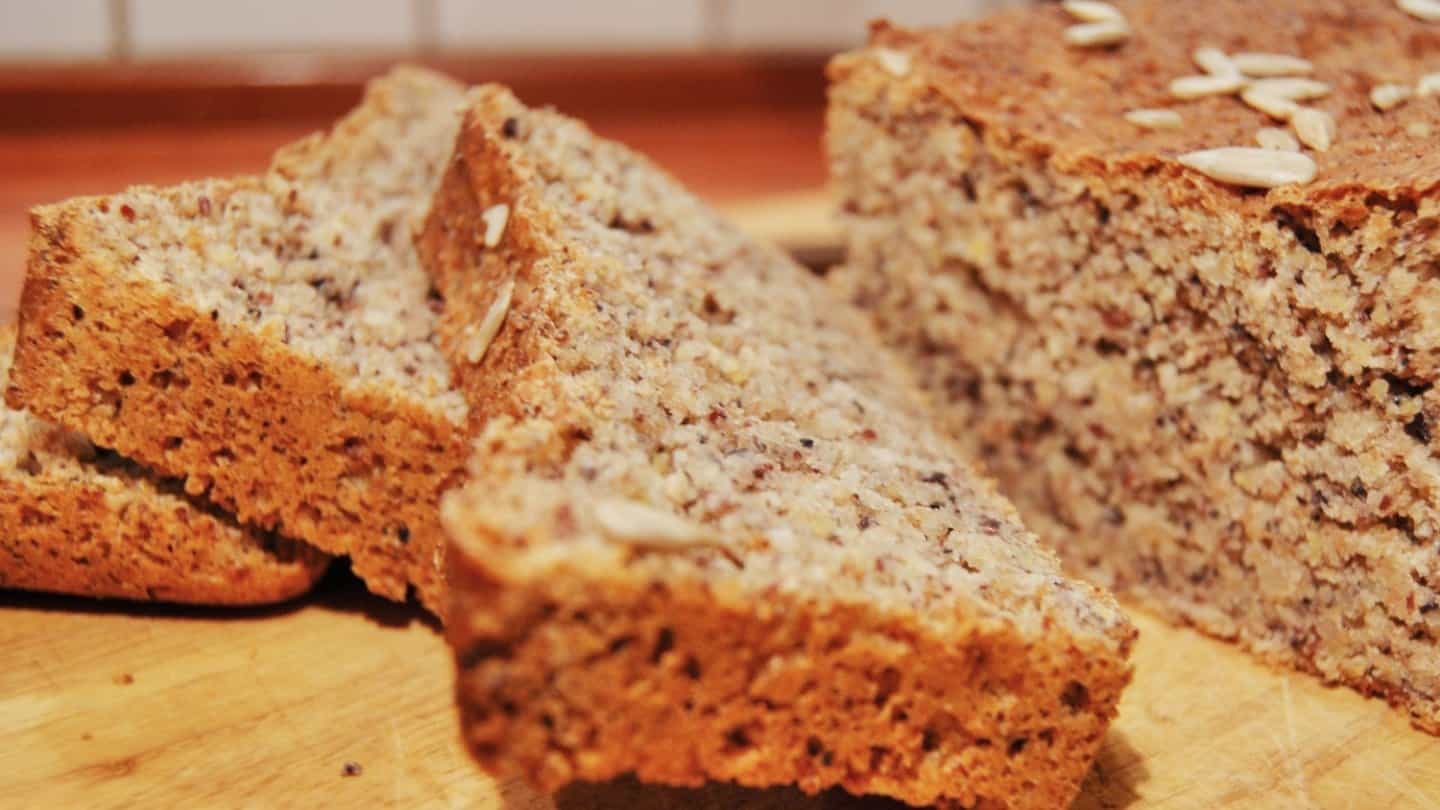
🙋 Frequently asked questions
Why Is Ezekiel bread expensive?
Most people who come across Ezekiel bread at the grocery store or any health food store are often taken aback by the pricing. It is one of the most highly-priced loaves of bread on the market, usually retailing at $4 to $6 on average. This begs the question; what is so special about it to warrant such a price tag? Ezekiel bread is not like your ordinary white bread, and the higher pricing has to do with the ingredients used. It is made of entirely organic ingredients and therefore priced higher due to the nutritional value attached to them.
How many whole grains are in Ezekiel bread?
It contains six sprouted whole grains and legumes. Sprouted grains give it a high nutritional value because it has more fiber and protein per serving. Ezekiel bread is likely to leave you feeling fuller than normal white bread like all whole-grain meals. If you don't want to spend $6, though, you can make yours at home. The recipe is relatively easy, and the resulting bread will be as delicious if not more than the store-bought ones.
🥗 What to serve with
There are different Ezekiel bread recipes and serving suggestions that you can try.
Cara Cara toast with hemp seeds and cottage cheese
Cut the bottom and top of an orange, slice off the peel plus the white pith, and then cut it into round slices. Spread about two tablespoons of cottage cheese (low fat) on the toast and arrange the top orange slices. Sprinkle some hemp seeds and enjoy!
Toast with almond butter, chia seed jam, and berries
Spread almond butter on the toast and a tablespoon of chia seed jam over one-half of it. Cover the remaining half with blackberries (4 or 5 will do).
Coconut toast with kiwi and honey Greek yogurt
Peel a kiwi and cut it into thin slices. Spread two tablespoons of greek yogurt on the toast and then drizzle with honey before arranging the kiwi slices on top and sprinkling unsweetened coconut flakes.
Tahini-ricotta toast, granola, apple, and honey
Mix a tablespoon of ricotta and tahini and spread on your toast. Slice an apple into thin slices and layer a few slices on top. Drizzle the toast with raw honey and then sprinkle granola and a subtle cinnamon dusting.
Ezekiel bread with spinach and sautéed mushrooms
Heat olive oil in a skillet over medium heat and add a cup of sliced mushrooms, fresh thyme leaves, and garlic powder. Saute the mushrooms until they are brown and tender, and then add baby spinach. When the spinach has wilted, season with salt and pepper. Smear goat cheese on your toast and then top up with your sautéed spinach and mushrooms.
🥫 Storage
Unlike store-bought loaves, there are no preservatives used in Ezekiel loaf, which lowers its shelf life. Ideally, it's advisable to consume the whole thing within 72 hours. However, leftovers are inevitable. So, how do you store your bread? First and foremost, avoid refrigeration.
Instead, cut the bread into slices and then wrap them in baker's paper and store them in the freezer. This makes it possible to take a slice or two at a time when you want to eat. This also ensures that the taste of the bread remains intact. When frozen well, this bread can retain the taste and quality for up to a year.
Next, remove the slices you need from the freezer and let them sit out at room temperature until they are fully thawed. Under no circumstances should you thaw the bread in the microwave. Doing so causes the bread to lose its nutrients, which is why you would bake such a loaf.
🍳 Related bread recipes
Looking for more bread inspirations? Try these delicious bread recipes. Including my two ingredient pita bread recipe and my .
If you're looking for something easy to bake with your kids, try my pizza monkey bread, sandwich bread, artisan bread and my classic monkey bread recipe. They are sure to be a hit.
👪 Serving size
For bread lovers, this Ezekiel bread recipe is a must-try! This delicious and healthy bread recipe makes 10 servings and is ready in 60 minutes. If you love my base recipe, try my cinnamon raisin Ezekiel bread variation next time around.
📋 Recipe
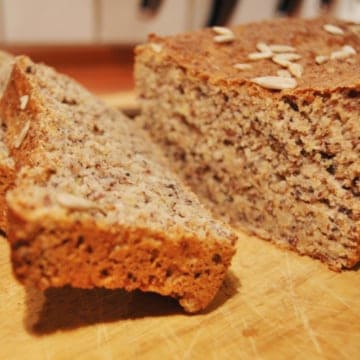
BEST Ezekiel Bread Recipe Ever
Ingredients
- 2 cups water - warm
- 2 tablespoon honey
- ¼ cup olive oil
- 1 package dry yeast - or 25g fresh
- 1 cup wheat flour - or 1 ½ cups wheat berries
- 1 cup spelt flour - or 1 ¼ cups spelt grains
- ¼ cup millet flour - or ⅓ if grain
- ⅛ cup green lentils - dry
- 4 tablespoon kidney beans*
- 2 tablespoon black beans*
- ¼ cup oat bran
- ¼ teaspoon salt
Instructions
- Measure the water, honey, olive oil, and yeast into a large bowl. Let it sit until foamy, about 5 minutes.
- Stir all of the whole grains and beans together until well mixed, then grind in a flour mill or blender and blend together with any grains you had that were already ground.
- Add this flour mixture to the yeast mixture and stir until well combined - the dough will be very sticky and wet.
- Pour the dough into a prepared loaf pan and let rise in a warm place four about 45 minutes, or until it reaches the top of the pan.
- Bake at 350 F (175 C) for about 45 - 50 minutes, or until golden brown.
Notes
- Remember that the amount of flour may vary if the ingredient is in grain or already ground …. If you can find it in grains, you have to add a little more to have the right amount. The idea is to have a bread dough that is NOT hard, more of a paste consistency (could be slightly sticky, but not too much, definitely not liquid!). That is why you add the flour to the liquid and not the other way around.
- To grind the flour, I used a blender - it worked perfectly fine with all the grains, just make sure to let it run long enough so everything is broken into flour consistency (around 5 minutes). An important thing is not to put too many grains in the blender (never over 2 cups) because the weight of the grains will prevent ones on the bottom from being ground. At the same time, be careful to not put too little in either because the speed of the blades will make the grains fly and then prevent them from being ground. It is all a matter of balance - if necessary, turn the blender off and use a spoon to mix the grains, so the ones in the bottom are sure to be ground.

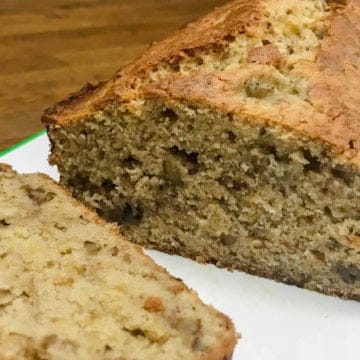

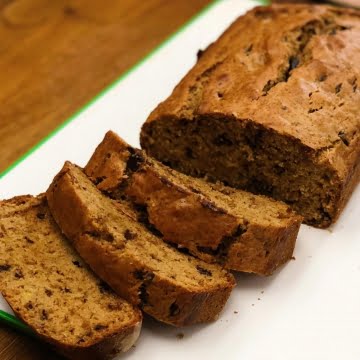
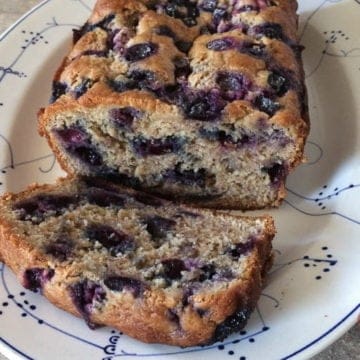
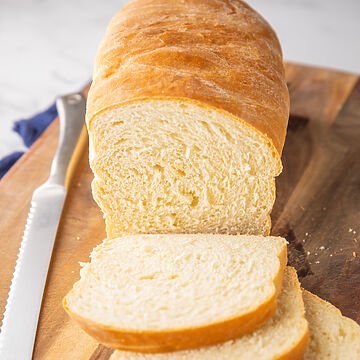
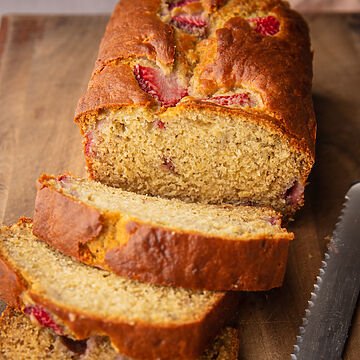
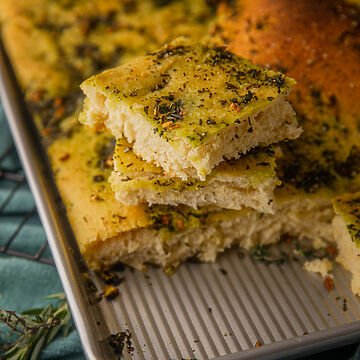
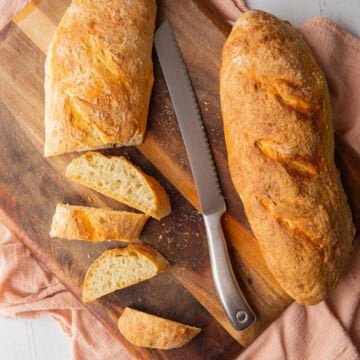
Jaleesa Stengel
Do you think money is saved from making vs buying? I pay $5.19 for the Low Sodium loaf.
Steve Woods
The question posed was "Do you think money is saved from making vs buying?" I would say, if you consider the health benefits and savings from medical costs associated with consumption of preservatives, chemicals and other substances related to processed food the savings are immense. If you are speaking only of the cost of baking/cooking at home with fresh ingredients, then no. Therein lies the trap.
Gina
Are the beans cooked prior to use?
Kelly
No, they’re dry beans.
Janet Hardy
Could I make this bread with just sprouted brown rice and millet
Thomas Boudreaux
I'm sorry but I'm not sure about the beans. When you say cooked do you mean like boiled until soft? Then I would add them in the blender?
Kelly
Hey Thomas, all the other recipes I checked out say dry, so I imagine it’s the same here - you blend them w other dry components then add all the dry to the wet (yeast) mix.
Mary Seltzer
Are your grains sprouted? The recipe doesn't indicate that. I thought Ezekial bread used sprouted grain. If so, how do you sprout grain & make flour out of it? Thanks for any info.
Geraldine
Do you have to soak the kidney beans, black beans & lentils overnight before using.
Carol L Flanagan
How many loaves does this make ???
Natasha
Thank you for sharing this recipe. May I ask if the lentils, pinto and black beans are dry or canned?
Ben Rayl
Dry, you grind them into flour.
Stir all of the whole grains and beans together until well mixed, then grind in a flour mill or blender and blend together with any grains you had that were already ground.
Kathleen
Thank you for this clarification.
Darlene Smith
The healthiest bread on the planet! Love the taste of wholesome ingredients.
Phil
And still it is hard to find real Ezekiel bread as in the bible, as that is where it comes from, this is NOT Ezekiel bread as it is full of flour
Ezekiel bread has sprouted grains and legumes, it is a full and healthy bread but no real taste
You try and make it something it is not,
Real Ezekiel bread is heathy(no flour which is unhealthy)
Ben Rayl
This is a comfort food website, not a health website. As a chef I consider this Ezekiel Bread perfectly balanced. And I consider recipes guides, they are not written in stone.
As for the use of flour, the following reference sites use wheat flour: Food.com, Allrecipes.com, and the list goes on. Also if you take "wheat" and grind it, you end up with flour.
Julie
The recipe calls for green lentils, specifically. Would there be a problem substituting red lentils?
Ben Rayl
Yes, you can substitute red lentils for green. Your Ezekiel bread will turn out perfect either way!
Libby
First time breadmaker, so I apologize if this is an obvious question. Are the black beans and lentils dry or canned?
Thank you
CINDY VANDERZALM
WOW! This was so good! Thank you so much, will be using again and again.
Admin
Glad you liked it! Thanks
V Joanne Heyob
I don’t have a blender, would a food processor work? I want to make this bread for my grandson.
Thanks
Eileen Allen
Do you use dry beans for each bean type?
Kathleen
What size loaf pan?
How is bread pan prepared?
Faith G.
Thank you! I was thrilled today to find this recipe! Ezekiel has been part of my diet for years, and it's my favorite bread on the planet. But I now pay over $6 per loaf, so I'm thinking about making my own. I'm a complete novice at bread making. Can I make it in a bread machine?? I don't have an oven.
Kathleen
I want to try recipe but need to know, Are the beans dry or cooked & then ground too?
I see the price of Ezekiel bread is now over $12 a loaf, if you can find it.
toledo
is the nutrition info per serving, or per loaf? hopefully trying this recipe this weekend!
Angie Broyles
This is excellent! I followed the recipe almost exactly, subbing 2 TBSP sprouted mung bean flour for 2 TBSP red beans. I may try with kamut berries next time!
Donna Haverstock
I have a question about the beans. Dry beans that you grind? or Canned beans?
Thank you
Donna
Jean Schreckeis
Do you use dry beans
Shabnam Dhalla
Yes I have the same question as others. Is it okay to used dry beans blended without cleaning them as it is spread with chemicals whether organic or store bought. I would like to try and I have all the flours at home except dry beans. How about Ragi flour can we use that flour.
Vasanti
I love your recipe, I made bread was delicious, thanks for recipe 😊🙏
Susan Smith
Are the black beans and kidney beans canned?
Roswitha LaGarde
Can you replace the wheat flour with almond flour or chickpeas flour?
KLS
This bread came out perfectly! Flavour and texture are great. I ground all the grains in a Vitamix. I let it cool 30 minutes, cut into slices and put in the freezer as suggested. Will definitely make this again and again.
Corinne
Thank you for a wonderful recipe. I do have my own yeast starter and so I used it for my yeast. The instruction to wait until the dough rose to the top of the pan was helpful. I had to wait several hours before mine could be cooked, but that was fine with me and par for the course in my bread baking experience. For those of you anxious to get baking I really recommend waiting until the dough rises and it could be much longer than 45 minutes!
I did exchange the oil for water in the recipe due to trying to please my husband’s strict diet on the Esselstyn eating plan for reversing heart disease.
I also sprayed my loaf pan though with some olive oil and I lined the bottom of my pan with some parchment paper due to some of the other comments. That did help when getting the loaf to release from the pan.
I added homemade Baingan Bharta (an Indian eggplant dish) as a topping on my slice, and that made the whole dish truly amazing. The recipe is so much better than store-bought Ezekiel bread. You may have ruined me for store purchased Ezekiel loaves! How awesome.
I also enjoyed reading the origin of the Ezekiel bread recipe in the Bible (Ezekiel Chapt 4, and some commentary related to that. What a story!
Thank you I was scared to bake this for some reason and your recipe was very helpful.